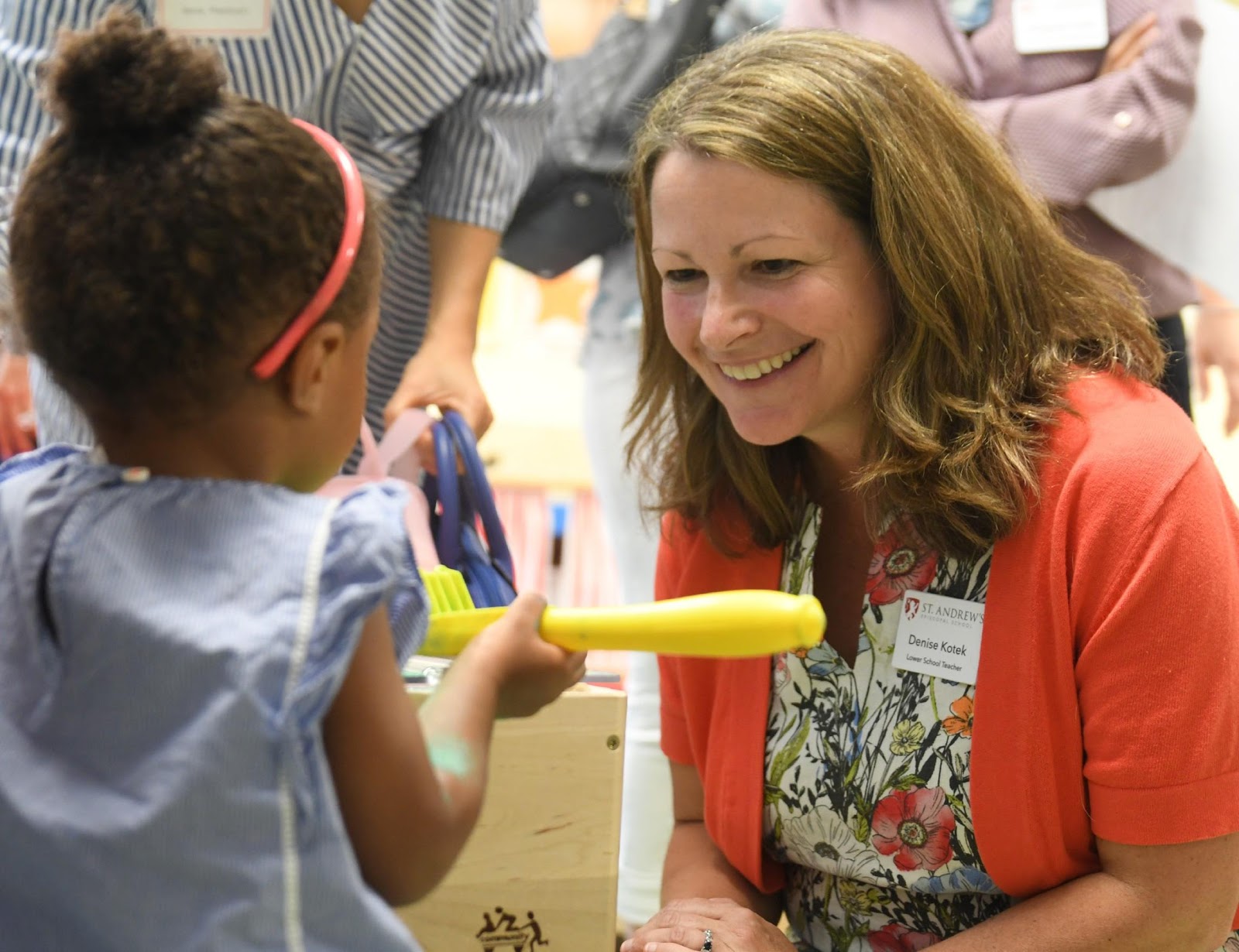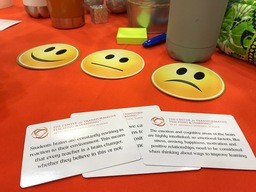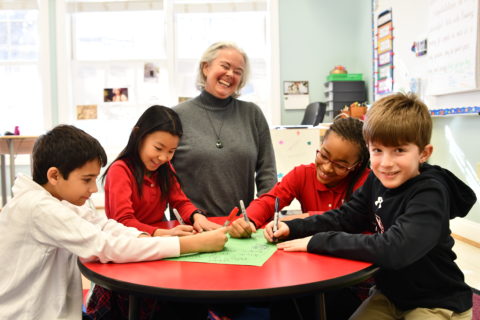One day this summer, I decided to dodge my rather dull “to-do” list, and head to the local pool with my daughter. As I watched her practice flip turns, my mind flitted to ideas about how to approach writing this article. Then, an unexpected gift in the form of kindness arrived.
A barefoot toddler padded over in my direction, stood in front of the chair next to me and reached down to pick up a brown hair tie from the ground. He looked up, handed it to me with a broad smile, and said, “Here!”
My heart nearly melted. This child gave me an object he thought I needed, with nothing to gain and no prompting from his father — who stood in the pool waiting to resume their game. The child’s simple act of kindness came from a place deep inside, and I happened to be the lucky recipient.
Kindness is intrinsic to young children
A 2012 study suggests that kindness is intrinsically rewarding to young children. Toddlers appeared happier when they gave away a treat of their own to a puppet than when they received a treat for themselves. (1) Practicing kindness not only makes us feel good, it helps children strengthen peer relationships, increases prosocial behaviors (i.e., behaviors that benefit others or society as a whole), happiness, self-esteem, gratitude, and well-being. (2)
Research shows that children have a capacity for kindness, but also a capacity for cruelty that can rear its ugly head in a tendency to exclude those unlike them in race, language, gender, social groups, and behaviors. (3,4) These findings reveal an exciting window of opportunity to teach our youngest learners how to tip the balance of their scales in favor of kindness.
Our preschool teaching philosophy at St. Andrew’s is anchored in our belief that teaching social-emotional skills – sharing, comforting, self-regulation, empathy, listening, and cooperation – provides the foundation for learning and success at school and beyond.
A 2015 study showed five-year-old students with higher prosocial skills were more likely to have more successful outcomes as adults in key areas such as education, employment, substance abuse, and mental health. (5) In addition, a large meta-analysis of 213 social-emotional learning programs indicated that students participating in them showed improvements in many areas, including social-emotional skills and academic achievement. (6)
How can we influence, strengthen, and extend our students’ capacity for kindness? Laying our professional insights as teachers alongside insights from research suggests a direction to explore. It all starts with developing what’s on the inside with these four approaches:
Help build emotional awareness
Preschool students express a broad range of emotions every day – some joyful, some not. When students experience a conflict or feel strong emotion, teachers provide verbal support and visual prompts to help children stop, take deep breaths, problem-solve, and move forward. Children use fun breathing strategies like bunny breathing to increase oxygen flow and improve their ability to think more clearly.
With practice, children learn how to identify and talk about their feelings. Once our youngest students can name feelings in themselves, they are more likely to identify and relate to the feelings of others. Teaching kindness is not only possible, but achievable, when we increase emotional awareness.
Practice what you preach
If we want seeds of kindness to grow strong roots, teachers must model kindness for students in what we say, how we say it, and what we do. We offer comfort, love, and support to each child to meet their unique needs. Sometimes, a simple hug can change the trajectory of a child’s day! As children feel safe, secure, and valued, their minds open up to engage in higher-order thinking.
In keeping with our Responsive Classroom curriculum, we use positive teacher language and encourage a St. Andrew’s “yet” mindset. Negative “I can’t do it!” thinking is replaced with “maybe not yet…let’s keep trying!” Modeling kindness doesn’t stop with our students! Celebrate your co-teacher’s birthday with the children, open a door for someone, greet colleagues with a smile, or give a compliment!
We know children are more likely to practice kindness when they see it, hear it, and feel it all around them, all the time.
Highlight the positive
Noticing and naming prosocial behavior goes a long way in helping children understand what kindness means. “Joe feels better now that you brought him the toy he wanted. That was kind of you.” The more we identify and encourage acts of kindness, children will be more likely to repeat them.
A year ago, one of our students was stuck in a grumpy mood. “No!” was a word she knew all too well, until one of us discovered her shoes. “Wow! I notice you have different shoes today. They are pink and sparkly!” She smiled, and her mood switched – just, like, THAT! We realized she was seeking out a connection, a way to feel she was valued and known. Brain research tells us that emotion and cognition are intertwined. (7) If we teach with intention, we can create meaningful experiences that generate positive emotions, paving the way for better learning.
Coach for character
St. Andrew’s is a place of learning that values the education of the spirit as well as the mind. We teach children the Golden Rule: treat others as you want to be treated. Teachers coach ethical behavior by role-playing scenarios with one another at circle, meeting time, or during play. We ask questions, listen to student feedback, and challenge students to think harder and deeper about feelings and choices. What could you do to make this person feel better? What other choice could you make? How did this book character make you feel?
St. Andrew’s teachers understand the importance of planting seeds of kindness in early childhood. We not only help children develop their moral character, but also establish an intertwined system of roots so kindness can grow and blossom beyond our school walls.
About the Author
Denise Kotek teaches Preschool at St. Andrew’s Episcopal School in Potomac, Md.
This article was originally published in Volume 4 of “Think Differently and Deeply” (2020).
Citations
- Aknin, L. B., Hamlin, J. K., & Dunn, E. W. (2012). Giving Leads to Happiness in Young Children. PLoS ONE, 7(6).
- Borba, M. (2017). UnSelfie: Why Empathetic Kids Succeed in Our All-About-Me World. Touchstone.
- Licona, T. (2018). How to Raise Kind Kids: And Get Respect, Gratitude, and a Happier Family in the Bargain. Penguin Books.
- Wittmer, D. S., Petersen, S. H., & Puckett, M. B. (2017). The Young Child: Development from Prebirth Through Age Eight. Pearson.
- Jones, D. E., Greenberg, M., & Crowley, M. (2015). Early Social-Emotional Functioning and Public Health: The Relationship Between Kindergarten Social Competence and Future Wellness. American Journal of Public Health, 105(11), 2283–2290.
- Durlak, J. A., Weissberg, R. P., Dymnicki, A. B., Taylor, R. D., & Schellinger, K. B. (2011). The Impact of Enhancing Students’ Social and Emotional Learning: A Meta-Analysis of School-Based Universal Interventions: Social and Emotional Learning. Child Development, 82(1), 405–432.
- Okon-Singer, H., Hendler, T., Pessoa, L., & Shackman, A. J. (2015). The neurobiology of emotion-cognition interactions: Fundamental questions and strategies for future research. Frontiers in Human Neuroscience, 9.




